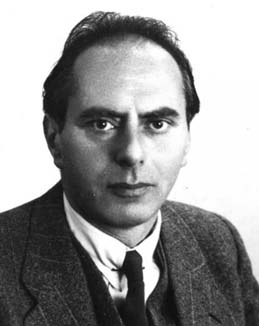
David van Dantzig
 المؤلف:
H Freudenthal
المؤلف:
H Freudenthal
 المصدر:
Biography in Dictionary of Scientific Biography
المصدر:
Biography in Dictionary of Scientific Biography
 الجزء والصفحة:
...
الجزء والصفحة:
...
 12-9-2017
12-9-2017
 820
820
Born: 23 September 1900 in Rotterdam, Netherlands
Died: 22 July 1959 in Amsterdam, Netherlands

David van Dantzig was at secondary school when he wrote his first mathematics paper. He was only thirteen years old at the time. However, his main interest in secondary school was not mathematics, rather it was chemistry. After leaving school he continued with his studies of chemistry, but this he did not enjoy and when he was forced to give up his academic studies to help support his family van Dantzig took on a number of jobs purely to make money.
By now van Dantzig knew that mathematics was the subject which he really wanted to study but he was not in a position to do so, both because he had to earn money and also because he did not have the necessary school qualifications. He put in hours of work on mathematics in the evenings after finishing his money earning tasks for the day. He took the state mathematics examinations in 1921, at a higher level the following year and again in 1923 he passed at a higher level still. Entering the University of Amsterdam to study mathematics he soon passed examinations which took him essentially to Master's Degree level.
Van Dantzig became an assistant to Schouten in 1927 at Delft Technical University. Then, for a short time, he taught at a teacher training institution, but he returned to Delft as a lecturer in 1932. This was the year in which he received his doctorate from Gröningen for a thesis which he submitted in 1931 Studiën over topologische Algebra. In this work he coined the now familiar term topological algebra but the thesis is memorable in other ways too. It [1]:-
... is a fine example of mathematical style: it consists of a concise string of definitions and theorems organised in such a way that in this context each theorem is obvious and none needs a proof.
He was promoted to extraordinary professor at Delft in 1938 and then an ordinary professor in 1940. The Dutch had tried to remain neutral when World War II broke out in 1939 but in the spring of 1940 German troops, in a strategic move on their way to attack France, entered Holland and the Dutch were defeated in a week. Van Dantzig was dismissed from his chair when the Germans occupied Holland and he was forced to move with his family from the Hague to Amsterdam.
After the war ended, he was appointed professor at the University of Amsterdam in 1946. In Amsterdam he was the cofounder of the research and service institution, the Mathematisch Centrum. He played a major role in both this Centre and in the University of Amsterdam where he continued to hold his chair until his death.
Van Dantzig studied differential geometry, electromagnetism and thermodynamics. His most important work was in topological algebra and in addition to his doctoral thesis which we mentioned above, he wrote a whole series of papers on topological algebra. He studied metrisation of groups, rings and fields. One paper classified fields with a locally compact topology.
After the Second World War, van Dantzig changed topics and worked on probability and statistics.
- H Freudenthal, Biography in Dictionary of Scientific Biography (New York 1970-1990).
http://www.encyclopedia.com/doc/1G2-2830905075.html
Articles:
- H Freudenthal, In Memoriam David van Dantzig, Nieuw archief voor wiskunde 8 (1960), 57-73.
- J Hemelrijk, David van Dantzig's statistical work, Synthese 11 (1959), 335-351.
- J Hemelrijk, The statistical work of David van Dantzig (1900-1959), Ann. Math. Statist. 31 (1960), 269-275.
- J F Koksma, In memoriam David van Dantzig, Synthese 11 (1959), 329-334.
- Memorial to David van Dantzig: van Dantzig as a significist, Synthese 11 (1959), 319-328.
- In memorium Prof Dr D van Dantzig (Dutch), Statistica Neerlandica 13 (1959), 415-432.
- In memoriam Prof Dr D van Dantzig (Dutch), Nieuw Arch. Wisk (3) 7 (1959), 90.
 الاكثر قراءة في 1900to1904
الاكثر قراءة في 1900to1904
 اخر الاخبار
اخر الاخبار
اخبار العتبة العباسية المقدسة


